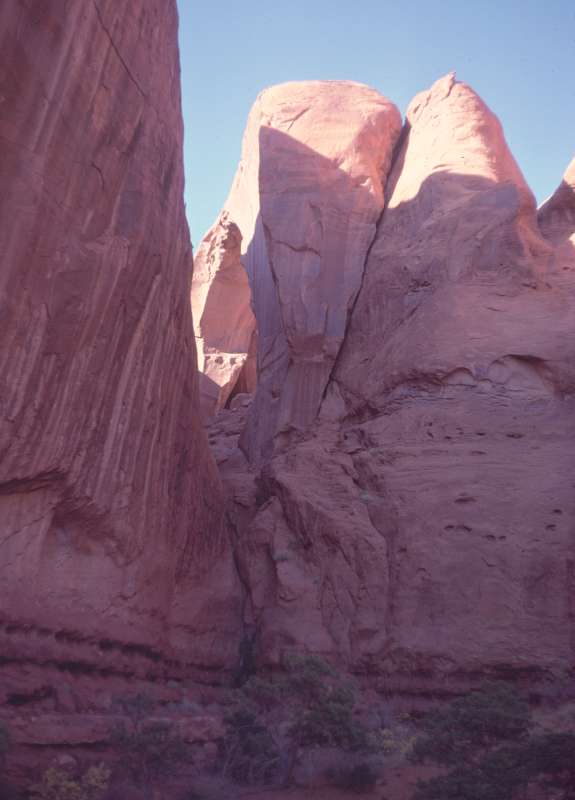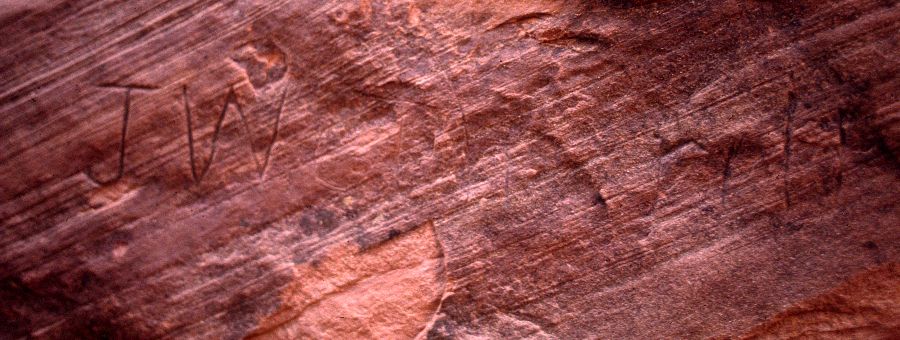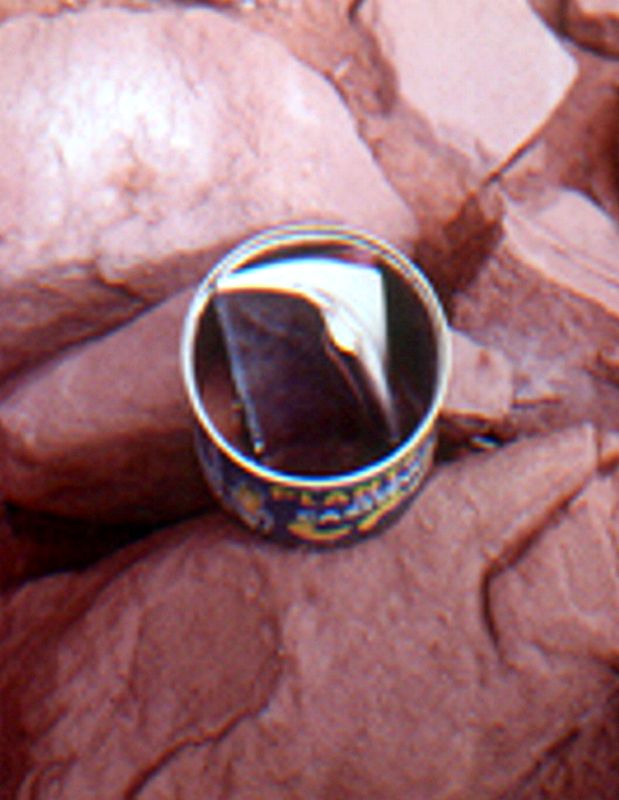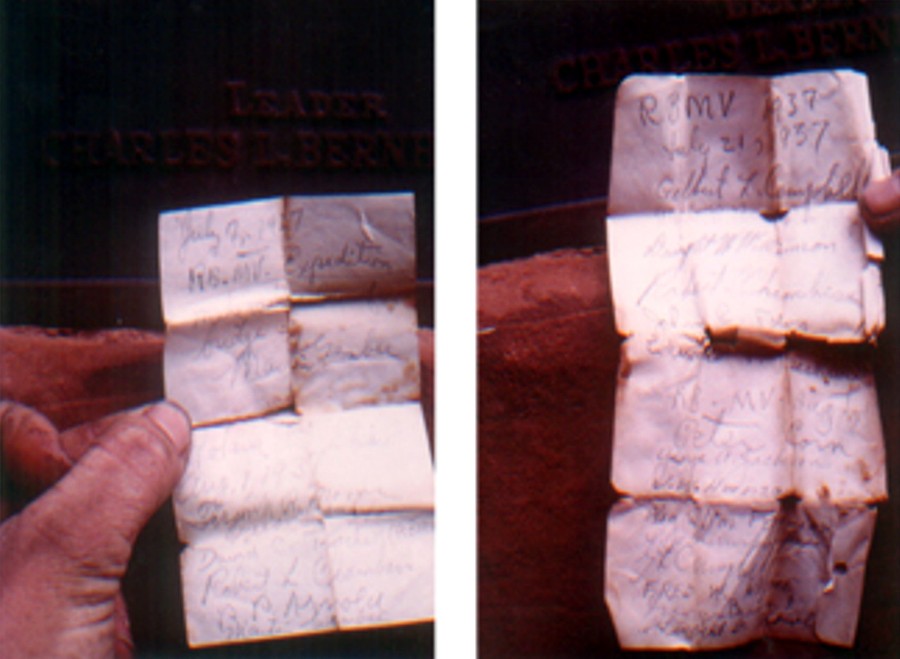NABSQNO 12S-586417-4082468
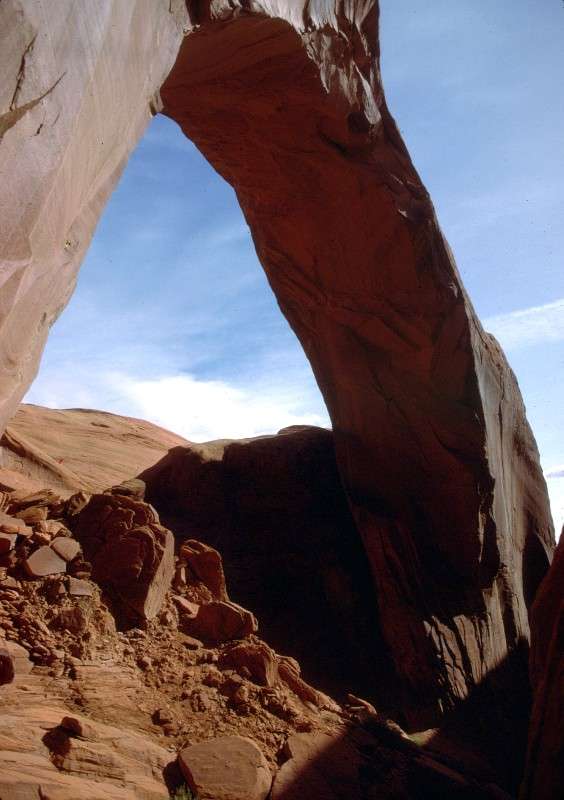
Clara Bernheimer Natural Bridge, Navajo County, Arizona
Photo by Jay Wilbur
NABSQNO 12S-586417-4082468. Clara Bernheimer Natural Bridge is an alcove natural arch eroded through DeChelly sandstone. It is located on Hunts Mesa southeast of the Monument Valley Navajo Tribal Park. A guide is required to visit the arch. According to Vreeland, it has a span of 149 feet, a height of 80 feet, a thickness of 27 feet, and a width of 30 feet. Another photograph is available here.
Clara Bernheimer Natural Bridge has had an interesting history. It may be the only
natural arch where virtually every visitor has recorded their visit going back
to its “discovery” in 1927. The first recorded visit was by John Wetherill, the famous Kayenta
trader who guided the discovery expedition to Rainbow Bridge in 1909. In June of 1927, he was guiding the Sixth
Bernheimer Expedition. The leader of that expedition, Charles L. Bernheimer,
was a German immigrant who made a fortune in the New York City dry goods industry, advancing from office boy to Chairman
and President of his own company. Fascinated by the romance of the American
Southwest, he financed and led eight expeditions to the area in the Twenties. Bernheimer
named the arch for his wife Clara.
|
|
Bernheimer’s first view of the arch
was from an edge-on perspective similar to the photo at left. Of all the
members of the expedition, only Wetherill was able
to negotiate the tricky 60 foot chimney required to obtain the base of the
arch and see it from the side. Wetherill left a
record of his visit by carving his name in the rock face west of the arch. It
was still visible in 1992, when the photo below was taken.
|
Two days later the expedition returned,
however, and with the aid of ropes several others were able to ascend to the
base and top of the arch. There they left an olive bottle with a note penned by
Bernheimer that named the arch “Clara Natural Bridge” and listed the names of those who had visited
it. In the Thirties the olive bottle was replaced by an aspirin tin and the
list of names grew to 45. One of the several visits in the Thirties was made by
John Wetherill, who returned to attach a bronze plaque
to the arch that Bernheimer had cast and shipped to him.
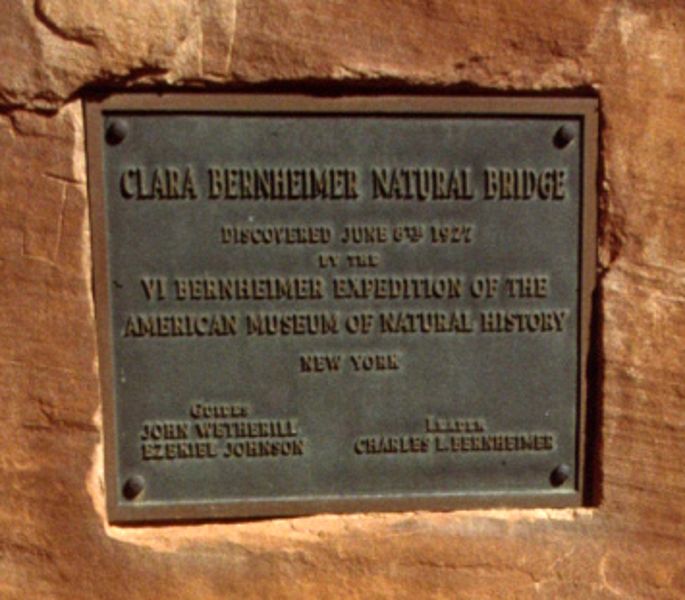
In 1970, the 50th visitor arrived.
He copied the names he found on the visitor register, still in the aspirin tin,
into a notebook. He then left the notebook and the aspirin tin with the
original register in a Planters Cashew can. In 1983, Harvey Leake,
grandson of John Wetherill, became the 53rd
visitor. He recovered the aspirin tin and register, by
then very much deteriorated, for preservation at the Utah State Historical Museum in Salt Lake City. Later that same year, Bill Crawley climbed to the
arch and found the Planters can and notebook. His photographs are below.
|
|
|
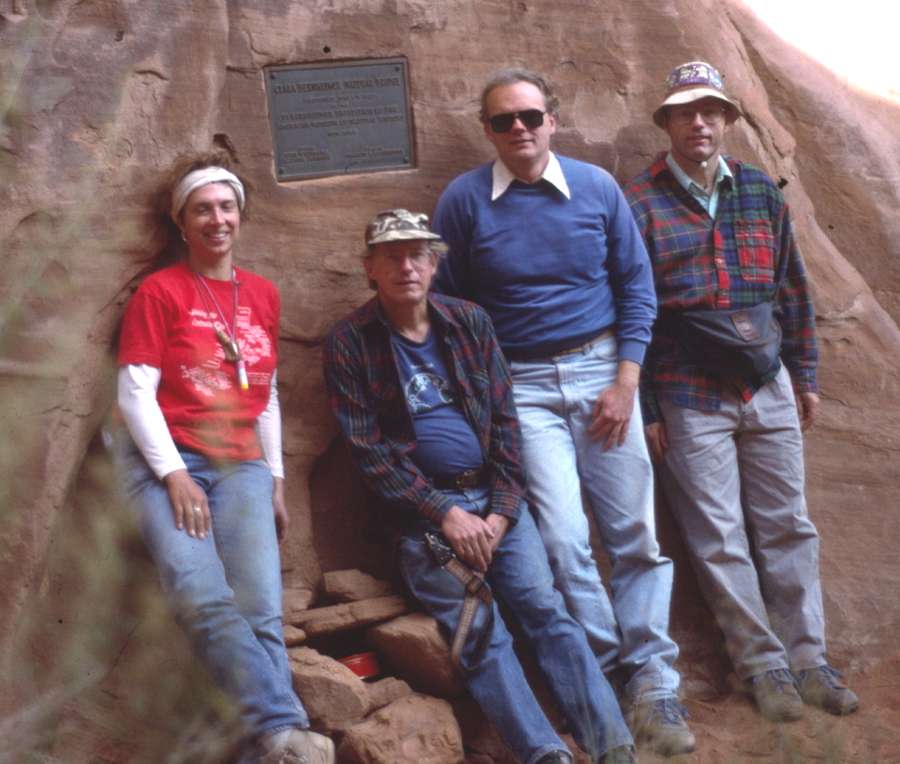
Since this visit, NABS has sponsored two
trips that have enabled over 50 of its members to visit and enjoy this unique
and historical natural feature. All signed the new register. None of this could
have happened without the efforts of Bill Crawley, pictured below. This page is
dedicated to him. Thanks Bill!
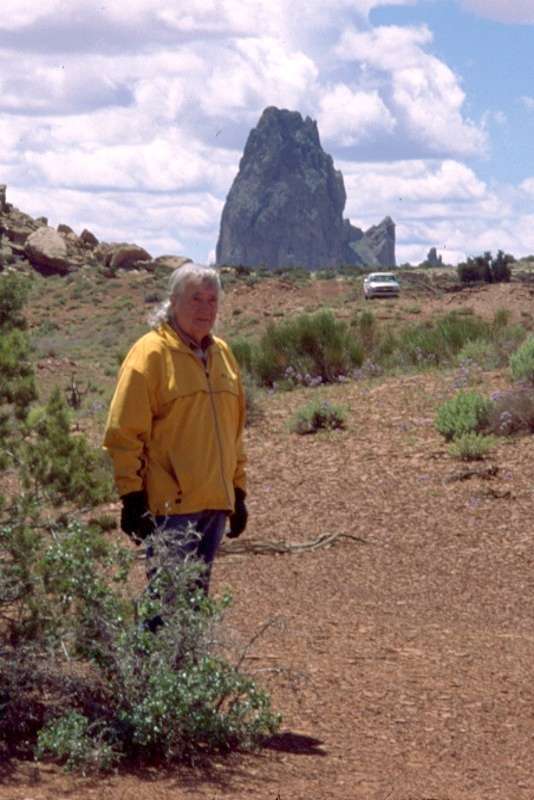
© 2006 by Jay H. Wilbur, All Rights Reserved.
